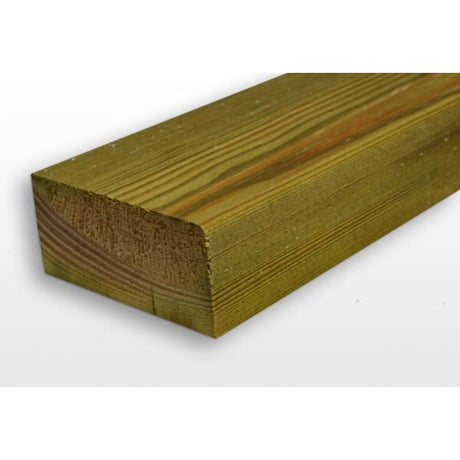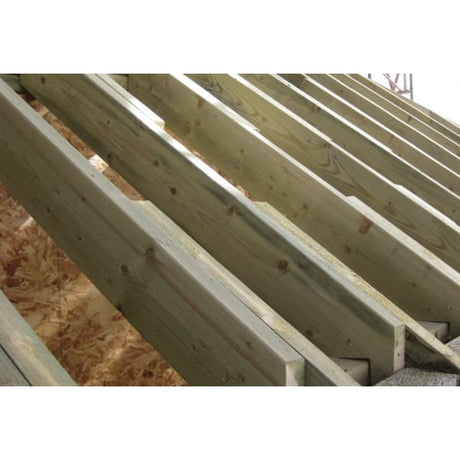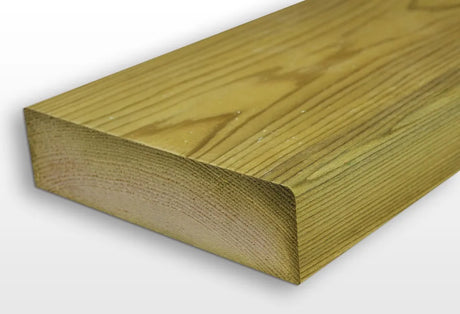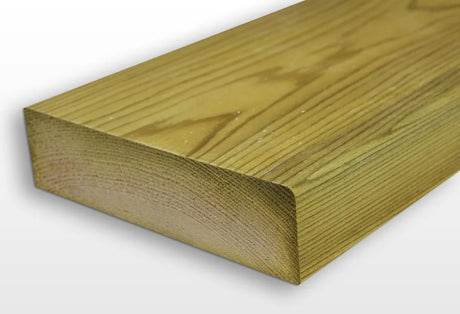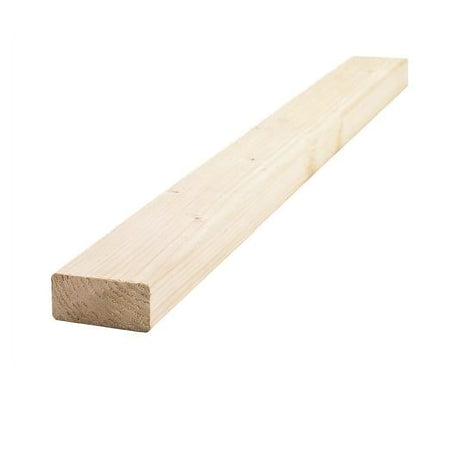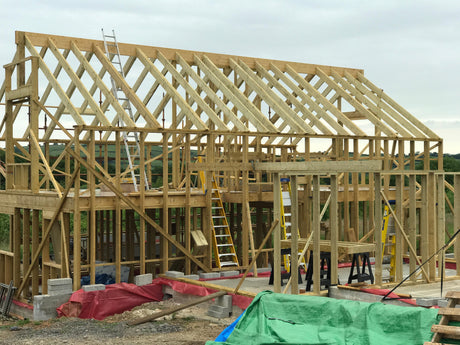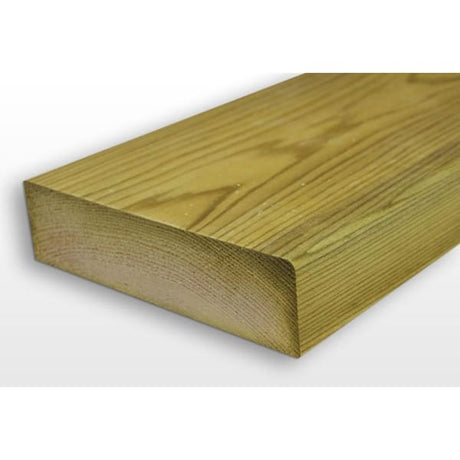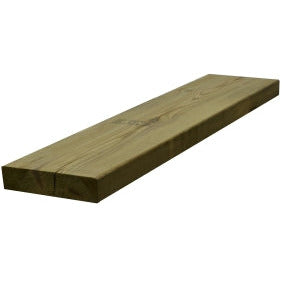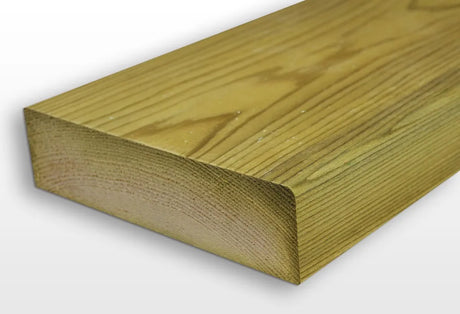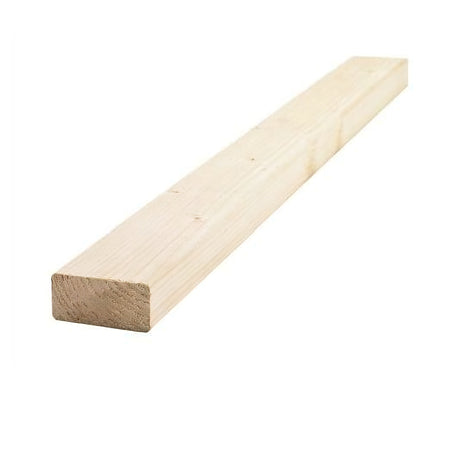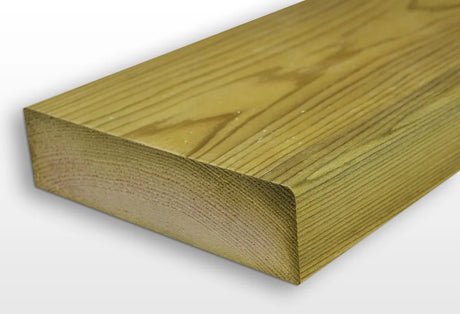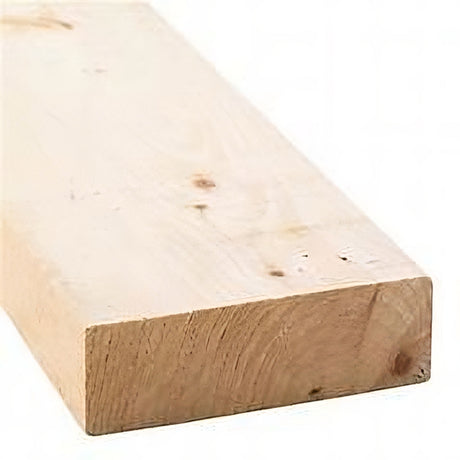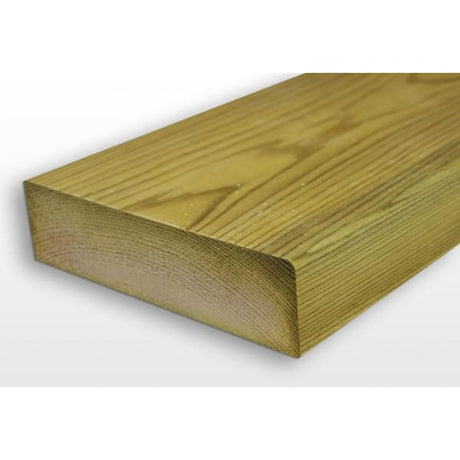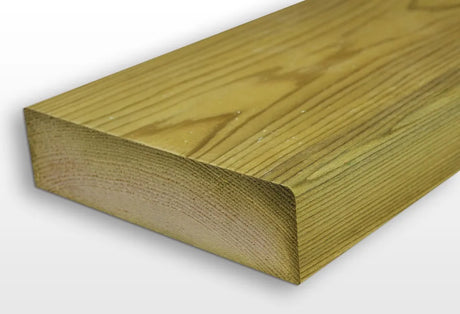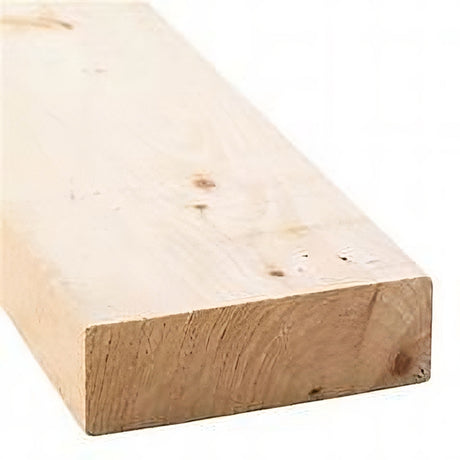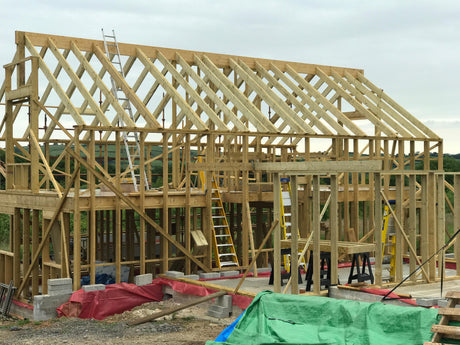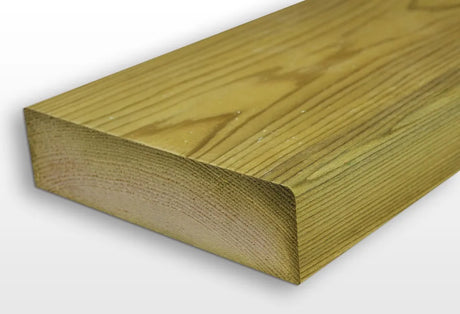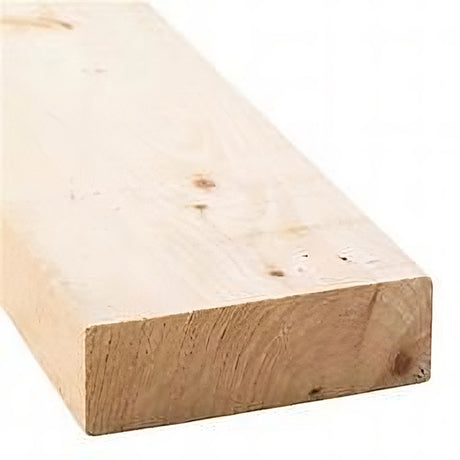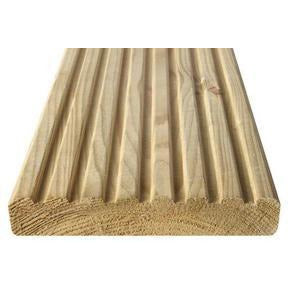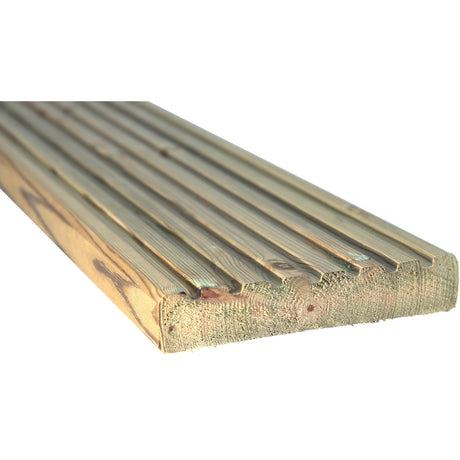-

Arranwood
3x2 Timber (47X75mm) C16 Graded Tanalised Treated
From £4.00Unit price /UnavailableIn stock (4525 units)Arranwood
6x2 Treated Timber Joist (45x145mm)
From £6.00Unit price /UnavailableIn stock (13752 units)Arranwood
Treated Timber Decking Board 145mm x 27mm Finished Size
From £20.00Unit price /Unavailable
Choosing the Right Wooden Decking Joists for the Job
Decking joists are vital to your outdoor decking structure, providing essential support and stability. When selecting the right joists for your project, consider using C16 and C24 structural graded, treated wooden decking joists.
These joists are specifically engineered for durability, with C16 being suitable for moderately loaded areas while C24 has superior strength and is designed for heavier loads, ensuring that your decking can withstand daily wear and tear as well as adverse weather conditions.
Treated to resist moisture, insects, and decay, these joists offer the strength and longevity necessary for a decking project that you can enjoy for years to come. Investing in high-quality joists is key to creating a beautiful, secure, and long-lasting deck.
Shop varnishes for a premium decking finish.
Decking joists play a crucial role in the stability and longevity of your decking structure. Our decking joists are specifically designed to provide unmatched durability and support, ensuring your decking not only looks stunning but also stands the test of time.
Buy from our range of decking joists and timber decking boards online.
Treated Timber Decking Joists
Choosing high-quality treated timber decking joists is crucial for building a durable deck that stands the test of time without sagging. At Armstrong Cheshire, we offer specially treated timber decking joists that provide the perfect foundation for your deck.
Our joists are engineered to extend their lifespan by up to 15 years, effectively resisting rot caused by insects and fungi.
Invest in our high-quality timber joists for a robust and long-lasting deck that you can enjoy for years to come!
Moisture Content of Decking Boards
To effectively minimise shrinkage issues such as cupping, cracking and warping, it is crucial to install timber as close as possible to the moisture levels of the surrounding site.
In the UK, outdoor wood moisture content fluctuates, ranging from approximately 19% in winter to 12% in summer. For durability, always choose a wood with weather resistance and moisture content below 20%.
Also, if you have a decking layout that means the wood is close to the ground, usually around 150mm or so, then you will need to ensure plenty of drainage under the decking so the water doesn’t build up and cause problems.
Getting the Right Joists
Choosing the right deck joists is one of the most complex parts of the decking equation and also one of the most important. That’s why getting a little help can be a good idea- we have a composite decking calculator that many people find useful.
Armed with your measurements and an idea of how you want the decking to look, you can buy your timber decking joists and your timber decking or Trex decking at Armstrong Cheshire.
Frequently Asked Questions
We offer decking joists in a variety of dimensions, including 4x2, 6x2, and 8x2 inches. Still not sure which size to purchase or how many joists you will need? Try our composite decking calculator to get the right amount.
At Armstrong Cheshire, our expert team are happy to give advice or answer any further questions on our variety of decking joists. Get in touch with us via our contact form here, or give us a call at 01625 322269.
For professionals in the trade, by joining our trade card scheme you will receive trade deals and receive a range of discount decking, timber and other construction materials. Apply for our trade card today and receive exclusive bulk discounts and fast UK shipping.






